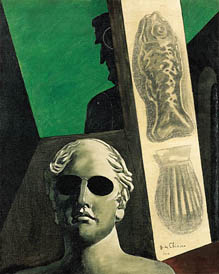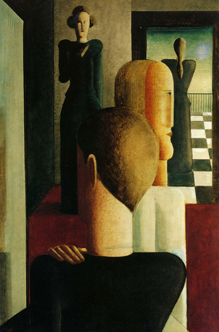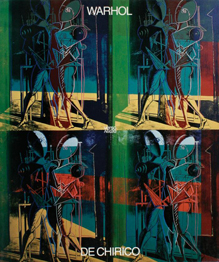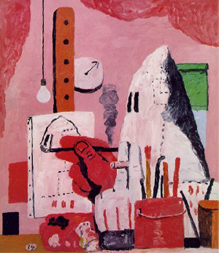According to several contemporary critiques Italy’s most renowned twentieth century artist and ‘prodigal son’ was not only an enigma but a pictorial clairvoyant capable of painting the past as well as the future. Many of them noted his powers of clairvoyance by citing his portrait of Guillaume Apollinaire with a target placed on his temple, which supposedly pre-empted the shooting of the poet in the very same spot (fig.1). De Chirico was part of the Modern Movement between 1910 and 1920, and a Post-Modernist fifty years before Post-Modernism. In terms of the development of Modern art he was undoubtedly a seminal influence and yet he remained outside the movement. Like a true catalyst he caused a reaction to occur without being changed by the catalytic process. How else could he have had such a direct influence upon no less than four major twentieth century movements – French Surrealism, Italian Scuola Metafisica, German Neue Sachlichkeit and Post-Modernism, as well as a whole host of artists not directly connected with any of these movements? Only a truly enigmatic artist could have permeated twentieth century art over such a long period, almost seventy years, whilst at the same time influencing such divergent artists as Oskar Schlemmer (fig.2), Andy Warhol (fig.3) and Philip Guston ( fig.4) in addition to several eminent film directors, novelists and poets including Hitchcock, Fellini and Ballard.
De Chirico was born in 1888 in Volos, Greece of Italian parents. His creative genesis like that of Dionysus, was twice born. Initially in 1910, when he began his highly influential metaphysical paintings and again in the 1970s, following his rediscovery by a new generation of painters, many of who were associated with the German Neue Wilde, Italian Transavantguardia or the School of Rome . His first naissance was aided by the influential French poet and critic Guillaume Apollinaire who proclaimed his early paintings to be metaphysical landscapes. Ritual death followed some ten years later in the 1920s at the hands of the Surrealists who, having appropriated the irreality associated with his metaphysical paintings, were not prepared to tolerate his Orphic-like descent into classical-mannerism. Unperturbed, Il Maestro survived this enforced exile into aesthetic Hades and continued painting vigorously for another fifty years.
 1
1 2
2  3
3 4
4